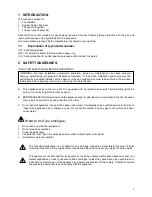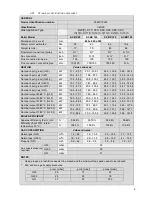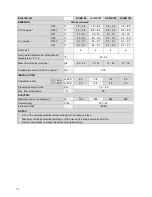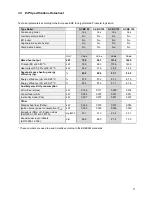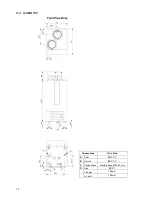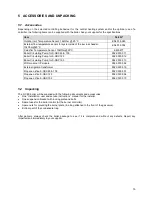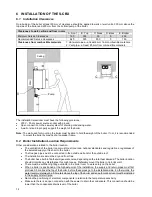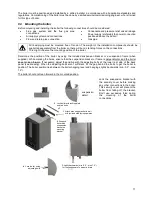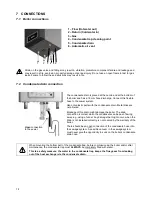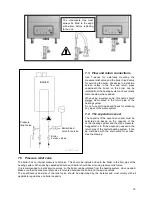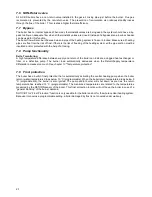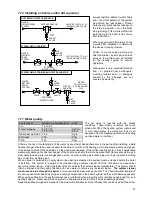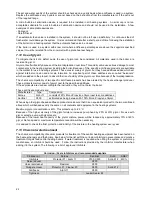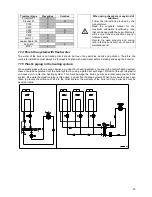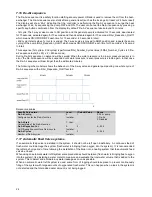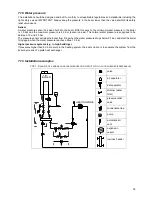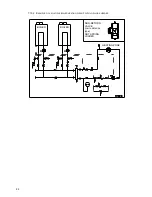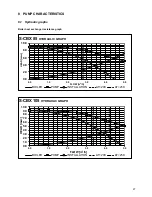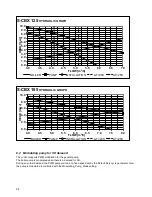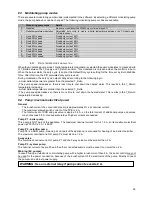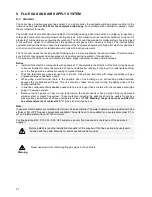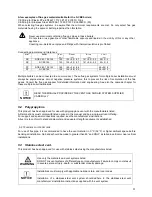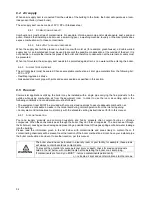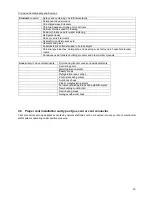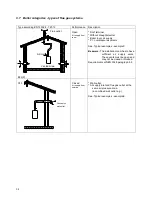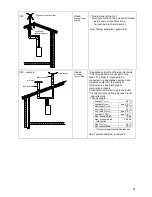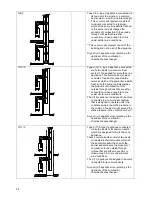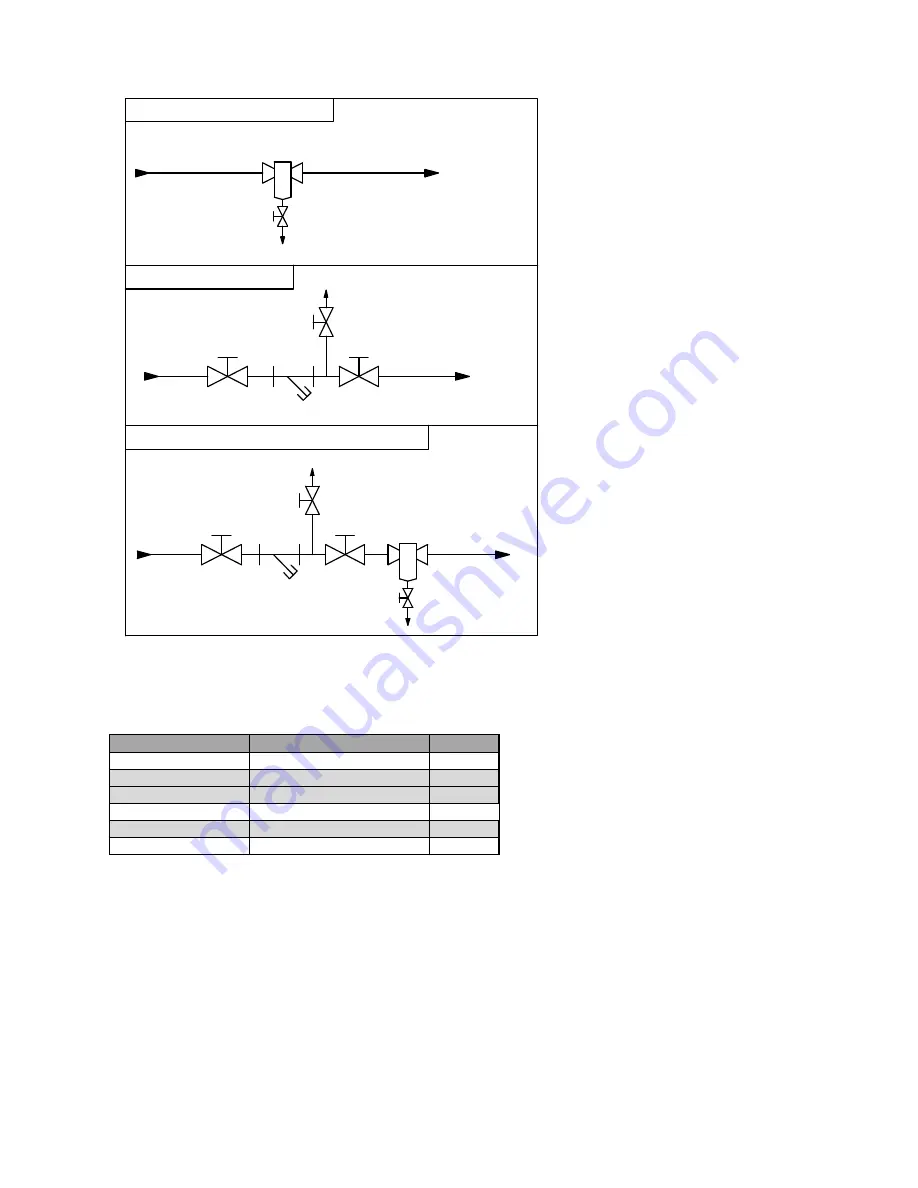
21
7.10 Installing a strainer and/or dirt separator
Always install a strainer (water filter)
and / or a dirt separator on the system
side after a low loss header / Strebel
boiler guard / plate heat exchanger on
the return pipework – not on the boiler
side (primary)! This will ensure that the
water going to the boiler is free of any
flow restrictions.
When using a water filter always check
a week after installation to determine
the strainer cleaning interval.
Advise to mount valves before and
after the strainer, including an air bleed
valve so the strainer can be isolated
for the heating system for service
operations.
Clean water is very important, blocked
and / or polluted heat exchangers,
including failures and / or damages
caused by this blockage are not
covered by warranty.
7.11 Water quality
The pH value is reached with the steady
conditions. These steady conditions will occur,
when after filling the heating system (pH around
7) with fresh water, the water will lose its air
because of the air bleeding operation and heating
up (dead water conditions).
If there is the risk of contamination of the water by any kind of debris/chemicals in the period after installing, a plate
heat exchanger should be used to separate the boiler circuit from the heating circuit (see drawing at the next page).
It is advised to prevent the possible air intake and water leakage of the central heating system. Fresh oxygenated
water might damage the heat exchanger of the boiler and should therefore be prevented! Usual spots where air is
most likely to seep in are: suction gaskets, pumps, air valve working as a venting pipe, O-rings / gaskets in stuffing
box, under floor heating pipes.
When a boiler is installed in a new system or an existing installation the system must be cleaned before the boiler
is installed. The system is required to be cleaned using a system cleaner from the list below or an equivalent
hydronic system cleaner. Follow the instructions provided by the system cleaner manufacturer. The system should
then be drained and thoroughly flushed with clean water to remove any residual cleaner.
The system cleaner
must never be run through the boiler.
For recommended cleaners see chapter "7.13 Chemical water treatment"
Do not use petroleum-based cleaning and sealing compounds in the boilers system as they could damage gaskets.
When using antifreeze in the system always use an inhibited mono propylene glycol antifreeze approved for use in
heating systems. Never use Ethylene glycol in a heating system as it is toxic and can damage gaskets.
Read the antifreeze suppliers manual for the maximum allowable level of antifreeze that can be used with the boiler.
Contaminant
Maximum allowable level
Units
pH
7.5 to 9.5
Total hardness
50 to 150
CaCO
3
3.5 to 10.5
Clark
Aluminium particles < 0.2
mg/L
Chlorides
150
Ppm
TDS
350
Ppm
SYSTEM WITH DIRT SEPARATOR
SYSTEM WITH STRAINER
SYSTEM WITH STRAINER AND DIRT SEPARATOR
DIRT SEPARATOR
DIRT SE-
PARATOR
WATER
RETURN FROM
SYSTEM
WATER
RETURN
FROM
SYSTEM
WATER
RETURN
FROM
SYSTEM
WATER FLOW TO LLH /
BOILER GUARD / PHE
WATER FLOW TO LLH /
BOILER GUARD / PHE
WATER
FLOW TO LLH /
BOILER GUARD /
PHE
DIRT
BLEED
VALVE
DIRT
BLEED
VALVE
AIR
BLEED
VALVE
AIR
BLEED
VALVE
VALVE
VALVE
VALVE
VALVE
STRAINER
(WATER FILTER)
STRAINER
(WATER FILTER)
Summary of Contents for S-CBX 105
Page 2: ......
Page 40: ...40 9 10 Flue Terminal Positioning ...
Page 42: ...42 9 11 1 FIGURE 12 LINE G ...
Page 55: ...55 11 5 Ladder Logic Diagram ...
Page 56: ...56 11 6 Electrical schematics ...
Page 57: ...57 ...
Page 137: ......

